How to reconcile the visual hunt of terrestrial sometimes antediluvian-looking animals with the urge of putting on a mask and a snorkel to spy on the submarine critters and all of that within the same day? South Africa possesses the answer and haven't finished to surprise us on its diversity.
We arrive in the village of St Lucia where we land up in a great guest house called Blou house backpacker. At the bottom of the garden, mongooses argue over the passion fruits the vervet monkeys have wasted.
St Lucia and the eponymous lake draw a large estuary – the largest one in Africa – propitious for wildlife. Birds and mammals live in this park, encircling the lake. The savannah vanished and trees grew up. In spite of the change of habitat, a variety of animals succeeded in adapting. Rhinoceros, kudus, leopards, zebras and wildebeests took up residence in this luxuriant land. The avowed goal of the park's managers is to recreate the former waves of animals migrations when wildebeests and the others ran away the Lebombo mountains to move towards the wetland of St Lucia.
Before getting in the park, at the end of the estuary, the owner of the guest house has promised us hippopotamuses. Better to trust local people than the paper guides, he wasn't wrong.




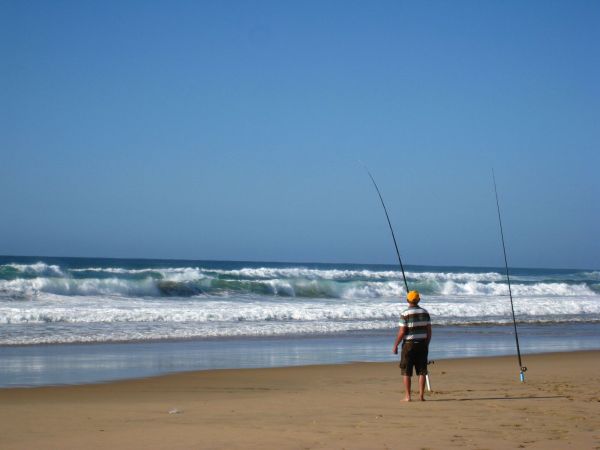
following this starter, we dash off to cape Vidal, 35km from the village. The owner, him again, announced this thing to us: « on the way to cape Vidal, you'll see every kind of animals including rhinos, as soon as you arrive at the end of the road, you slip mask and snorkel on to see colourful reef fish before driving back to St Lucia ». His speech sounded like the tempting caption of a tourist brochure. And yet, he was right again.
Underwater:




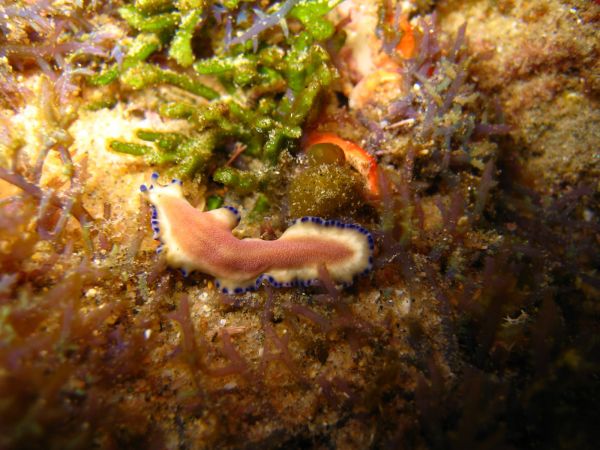





and a few hours later, on the earth:




St Lucia, one of the good finds of our South African journey.
RTW2-South Africa
Saturday 26 July 2008
on the earth and into the water at St Lucia
By dorian on Saturday 26 July 2008, 08:19
Friday 25 July 2008
the hyenas in action at Hluhluwe-iMfolozi
By dorian on Friday 25 July 2008, 21:08
At the beginning of our trip, while our eyes and memory were virgin of pictures of savannah and its fauna, A South-African, met on the Waterberg plateau in Namibia praised us the beauty and the high concentration of animals clustered in the Hluhluwe-iMfolozi park ( Zulu word pronounced Chluchluwi – Imfolozi). This name engraved on our log book and here we are now.
a few minutes after crossing the automatic barrier, several engine-stopped jeeps are crammed in the middle of the road. We switch off the engine and without seeing the scene, we recognize a characteristic sly cry. A lion is not far but about ten cunning hyenas succeeded in pinching a chunk of an antelope's carcass the predator had hunted. A laugh to flout it.
the bush sways. 2 hyenas appear, the loot in the mouth. Not at all disturbed by the human flock pressed against the protective guardrail of the jeeps, the 2 protagonists followed by some greedy and opportunistic fellow members cross the road before putting down the bloody carcass on the tarmac. One of females will finally have the last word and move away at the edge of road to enjoy its meal by dint of dreadful noises. Cracking sounds provided by a frighteningly powerful jaw.




After this morning firework, the day will be more dull despite the constant pleasure to watch every bush and every branch in the hope of flushing out the presence of an animal.



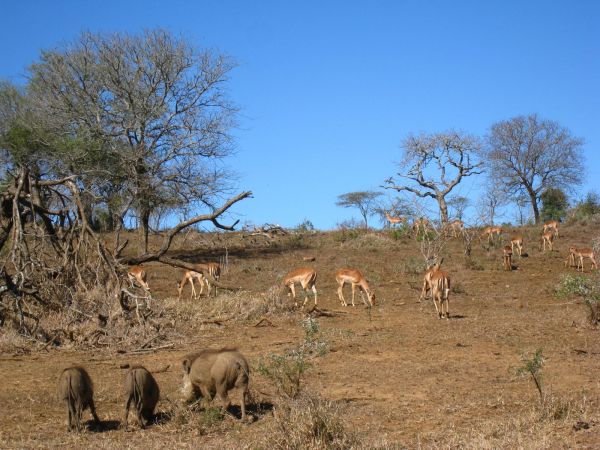





Thursday 24 July 2008
the magical reef of Sodwana Bay
By dorian on Thursday 24 July 2008, 20:53
the shock absorbers shake on the stony road. Kids wave at us in passing. The ordeal ends on a tasteless village out of hand. On the other side of the dune, a long sand beach and some great waves that seem intended to surfers. But at the entrance of the village, signs announcing guest houses and dive centers titillate us. What does this tiny bay, northeast of Durban, hide in its depths? We get off here to discover it.
Far from the almost industrial bustle of the Coral Divers center, we opt for the Amaury Diving club. Colin, the founder, greets us and we make an appointment for tomorrow morning on the beach.
The inflatable boats lie on the beach and a crowd fidgets around. Big tractors push them onto the water. Dive briefing. Armed with a mask and a tank we hop on the boat. The skipper avoids the breaking waves before dashing towards the dive spot.
We slowly sink into the big blue. The first patterns loom. Soft and hard corals decorate the reef formations and shelter an astounding diversity of submarine life. From the clown triggerfish to the boxy, from the harlequin shrimp to the emperor angelfish. The colors harmony of the nudibranches drive us speechless. The diversity of this kind of slug is so amazing that it became the Colin's speciality and plan to write a book on it. He shows us a species, unknown from the scientists' world so far – a nudibranch which still waits for its Latin name. Spotted, Striped, yellow, blue, white, purple and seldom exceeding the 2 centimeters, they embellish the miniature world of the reef. But the chromatic high point covers the harlequin shrimp which is savouring a starfish. Blotches trim its pearly shell. A few flaps of fin further, the grace of a swimming turtle.
We will repeat this ritual 5 other times with always the same dose of fascination. 6 dives in total and as so many unforgettable moments. Speckled crabs hiding in the cracks of a spiny coral. Open-mouthed morays in front of us, dumbfounded. Disks of majestic corals enveloped by orange shoals. Pimply nudibranches and stingray taking off from the sandy bottom.

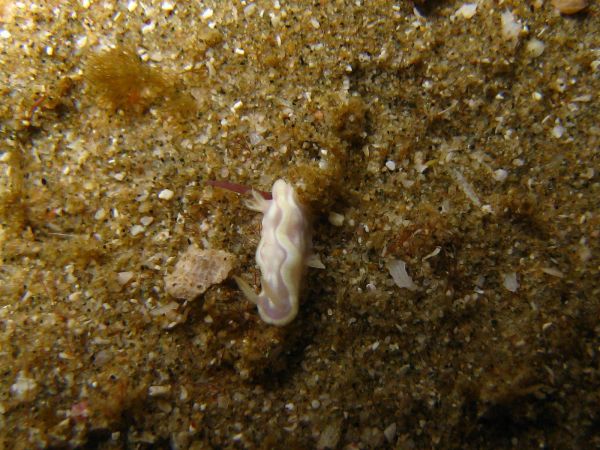

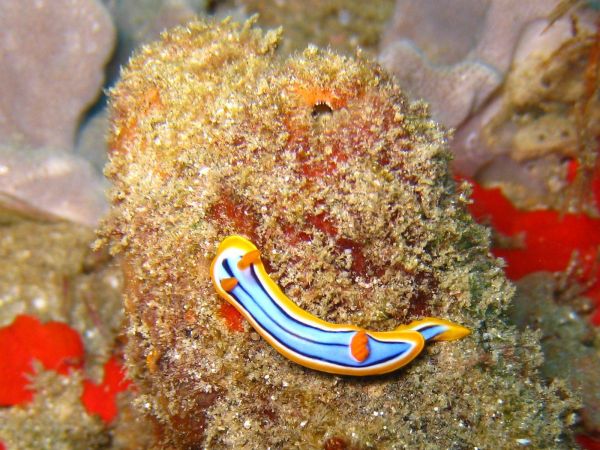

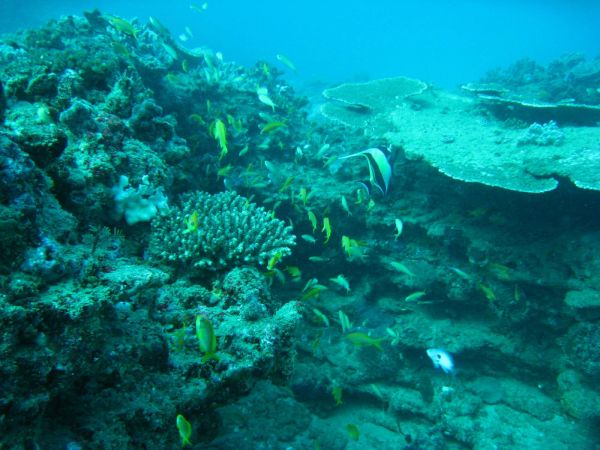
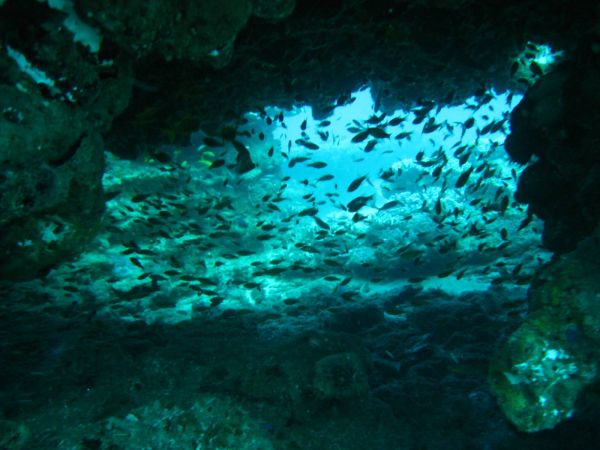
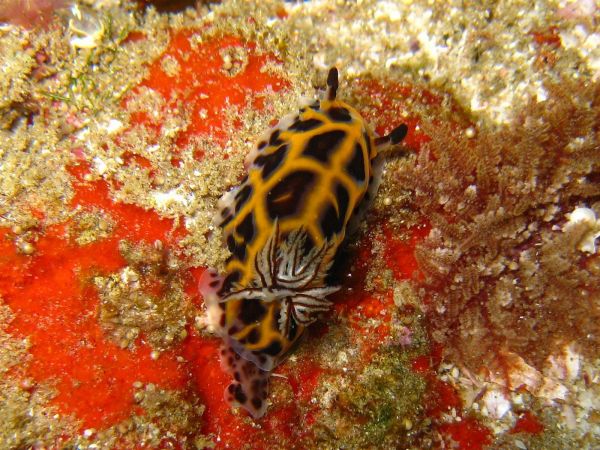
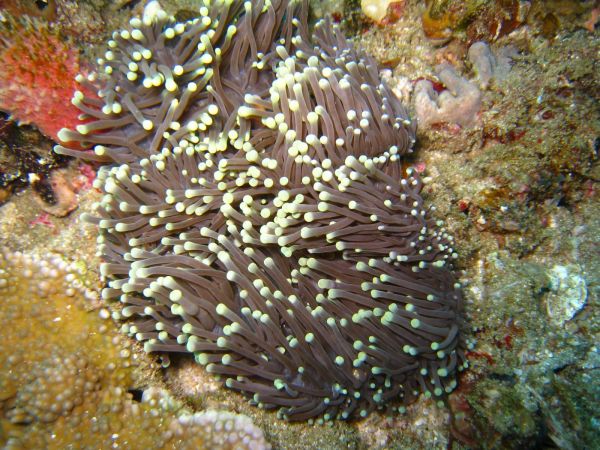
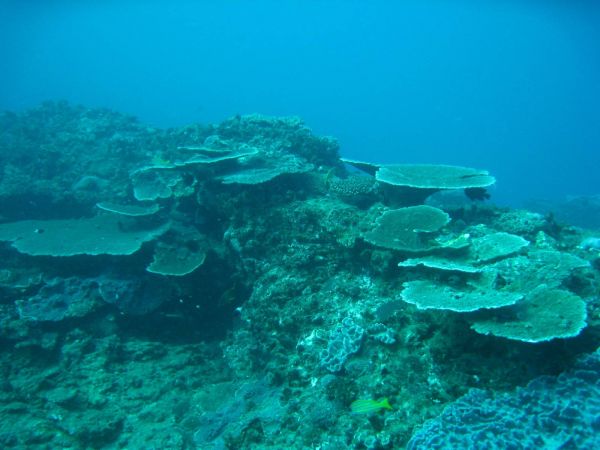
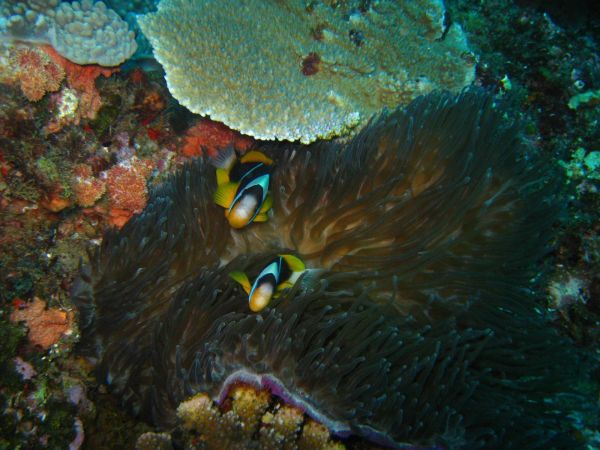
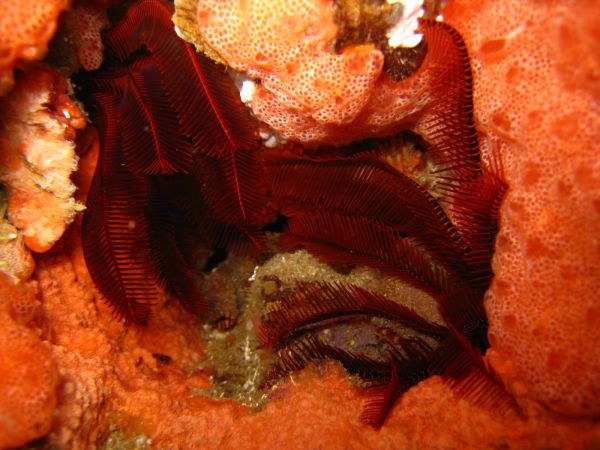
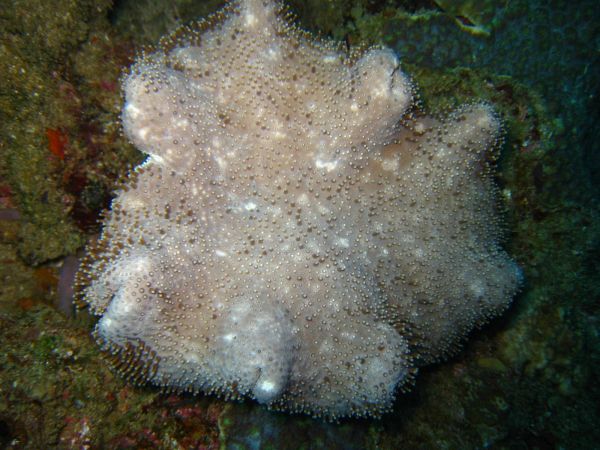

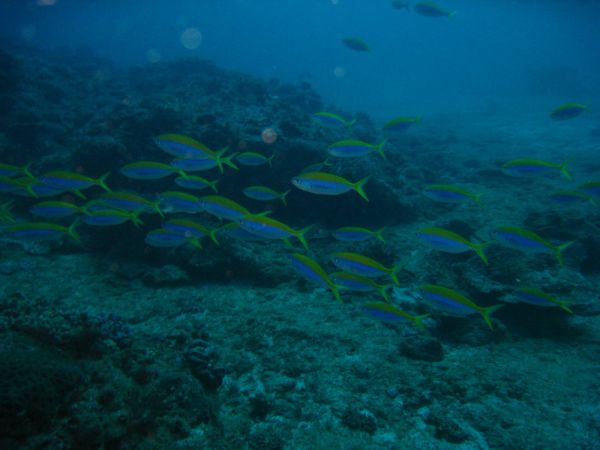
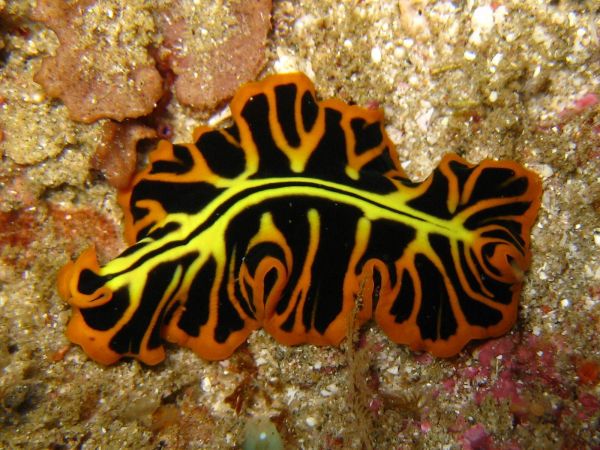


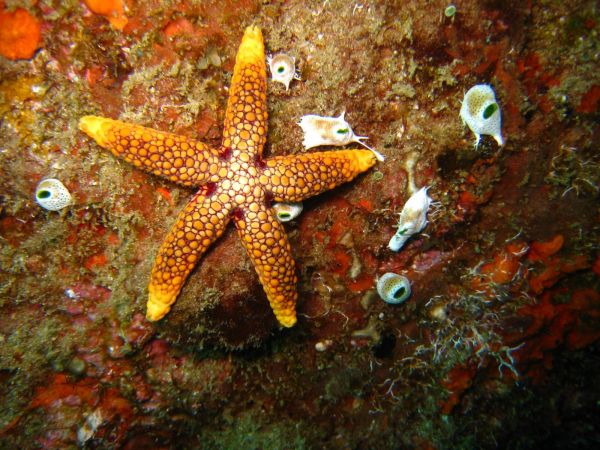
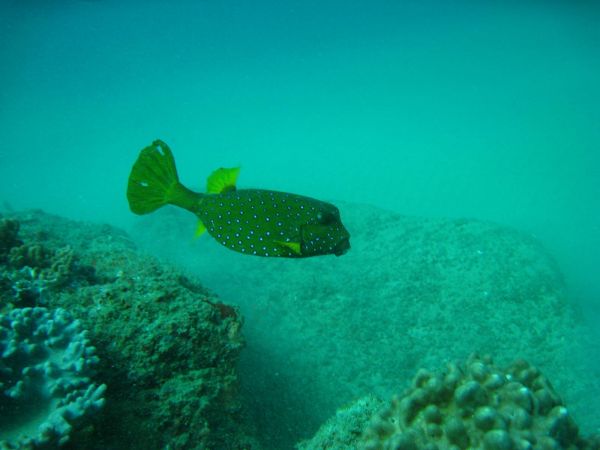
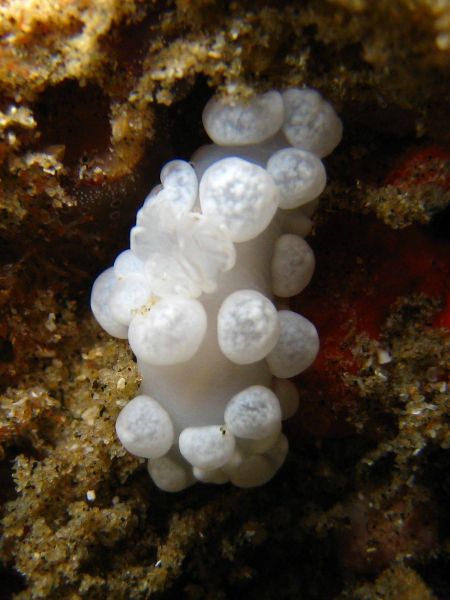
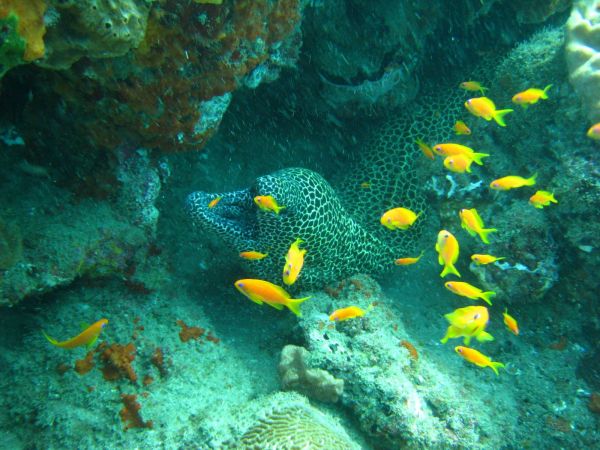




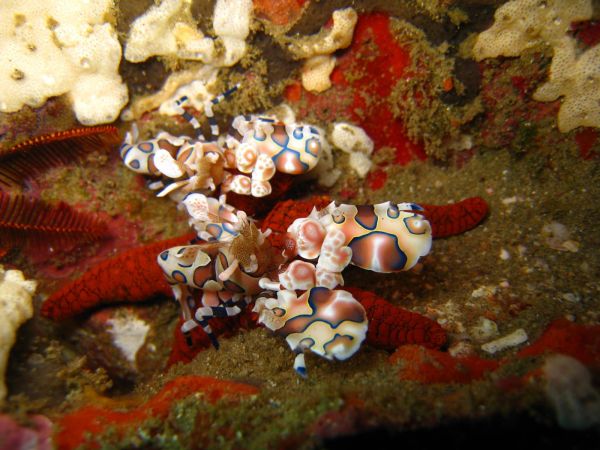
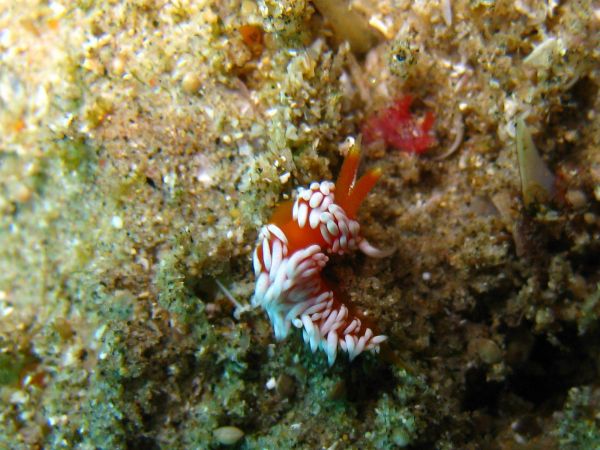
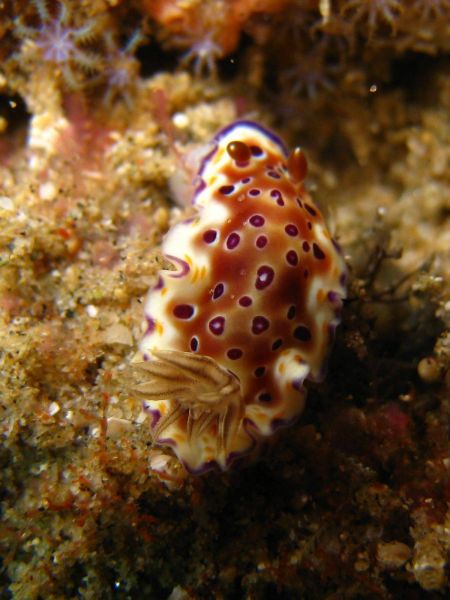

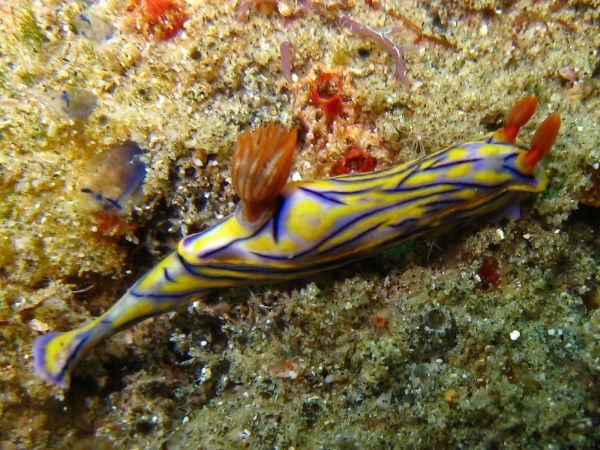



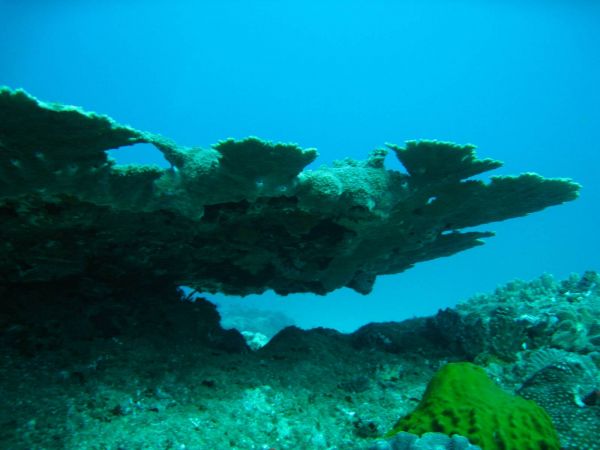
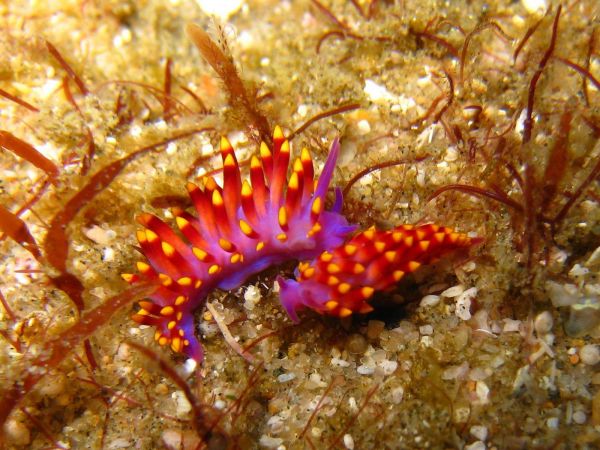


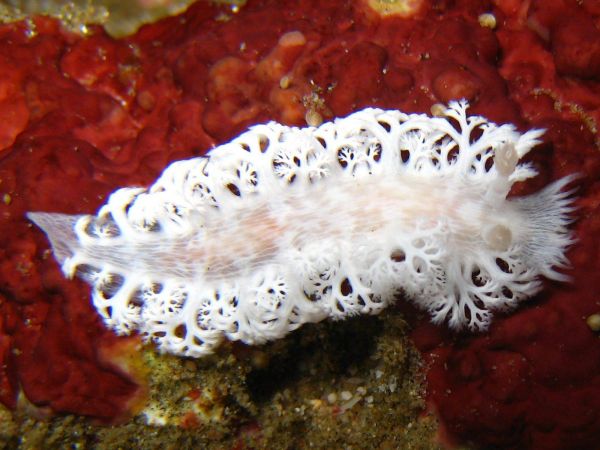
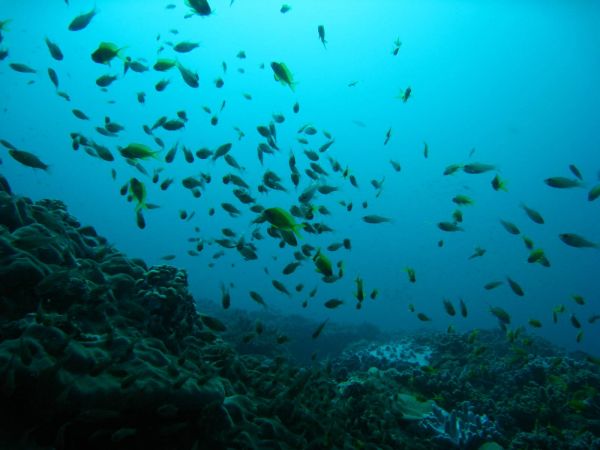
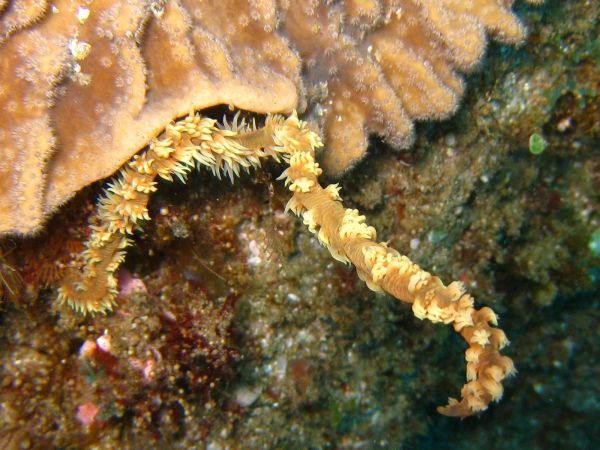
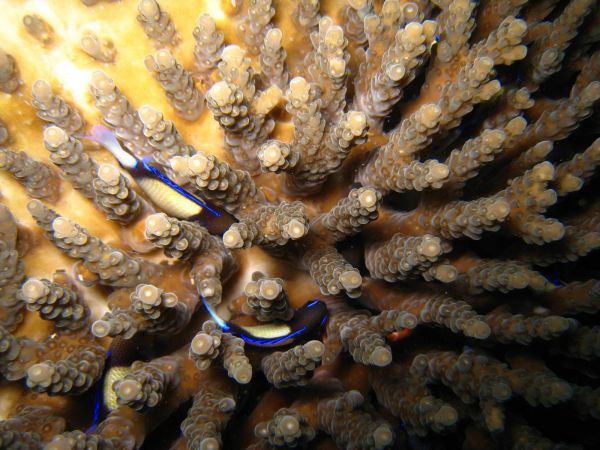
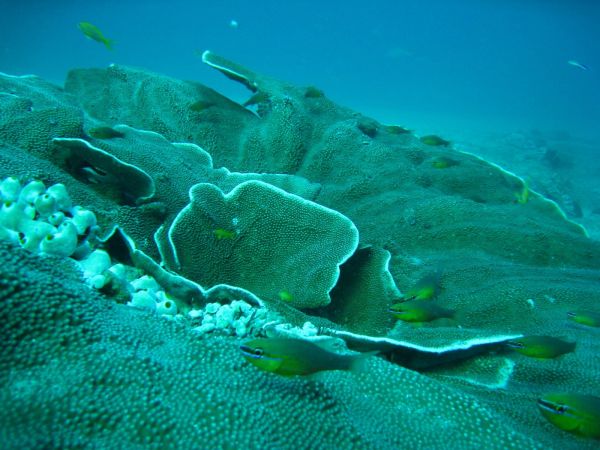




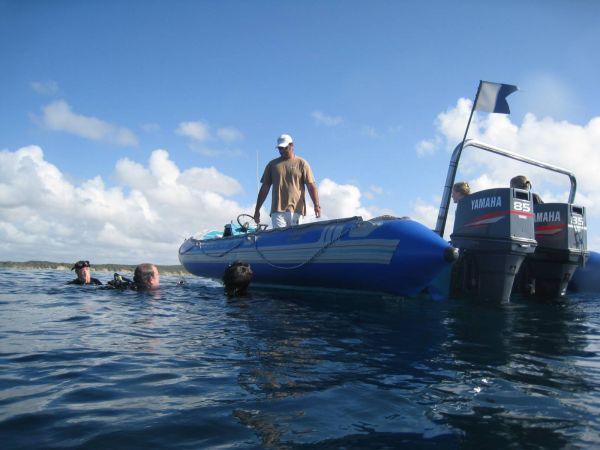
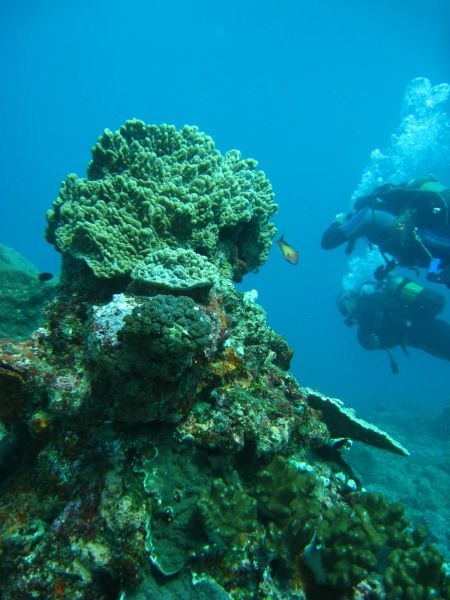

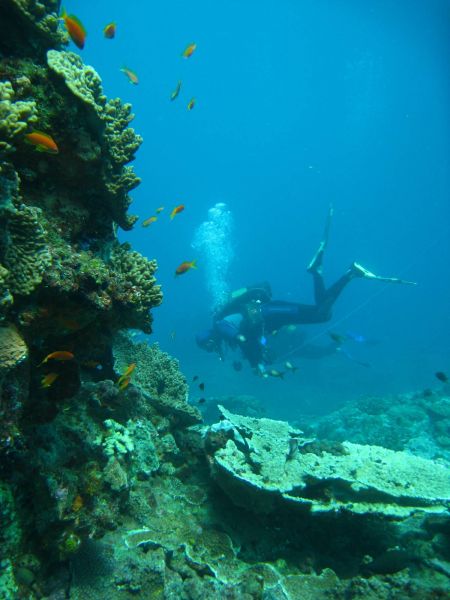
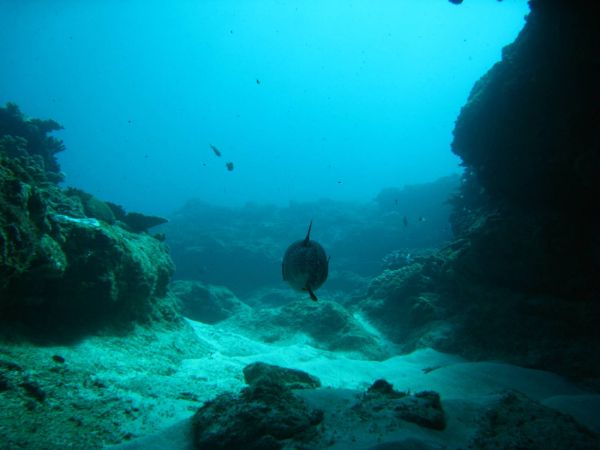




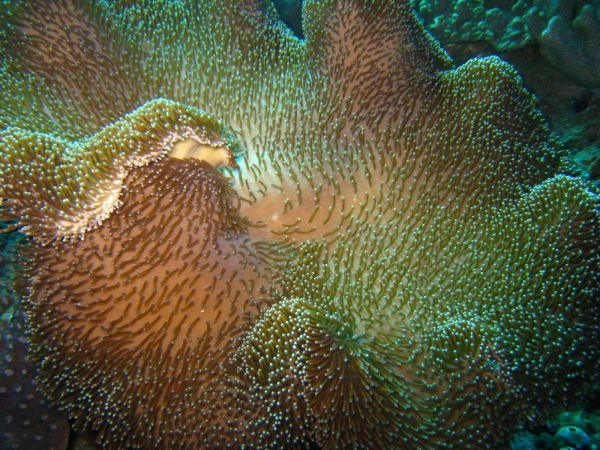

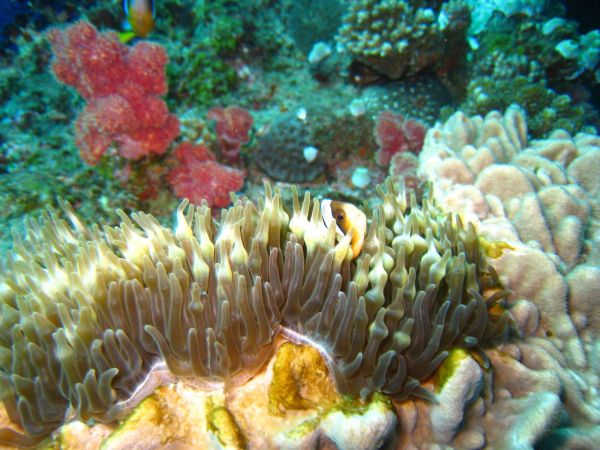
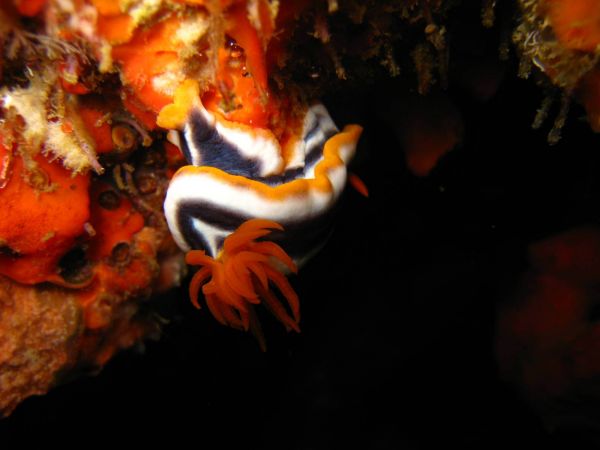


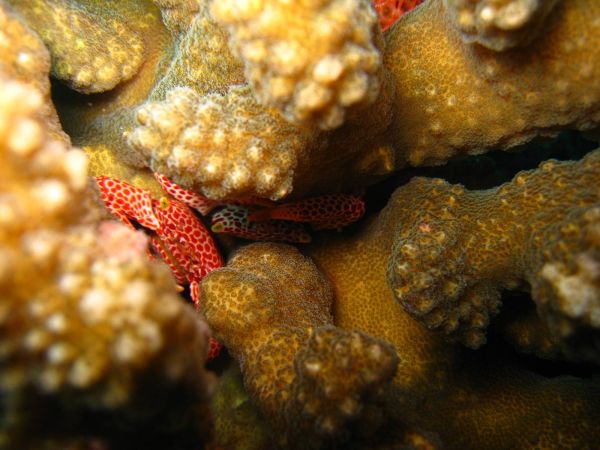
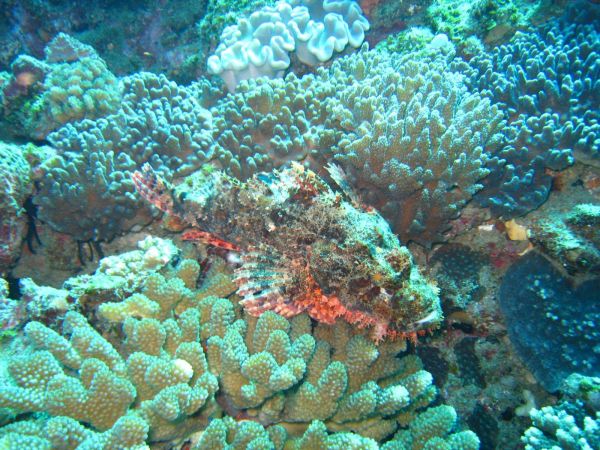


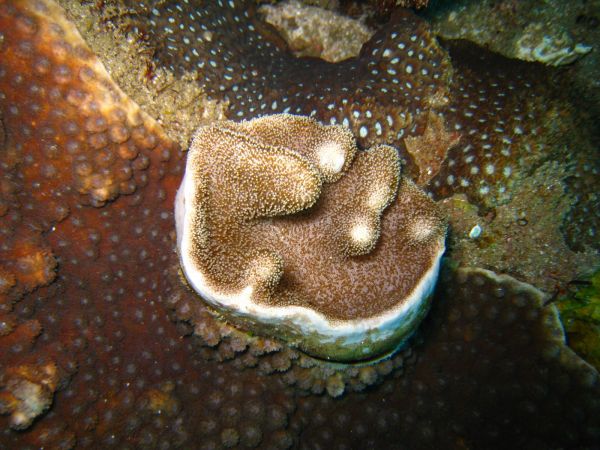
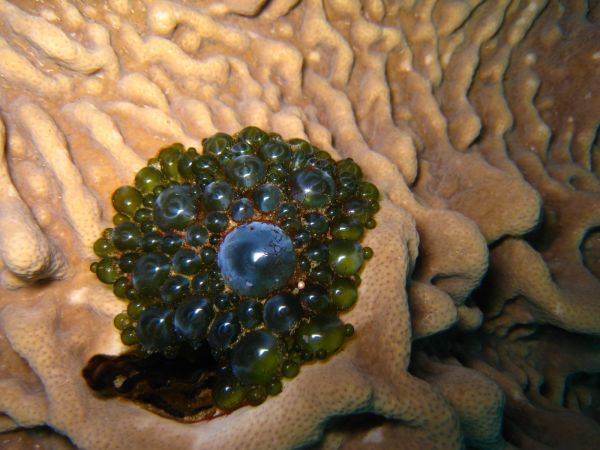
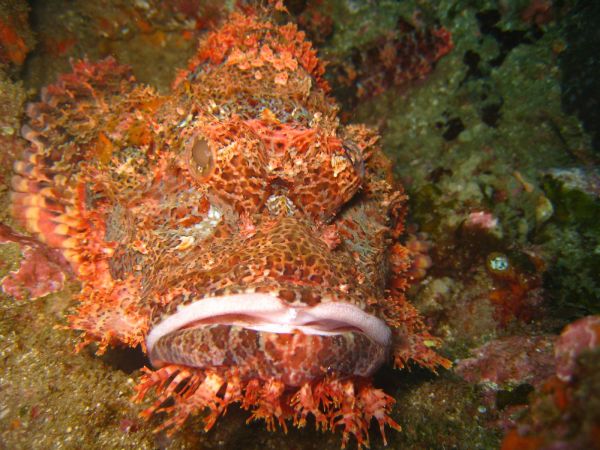


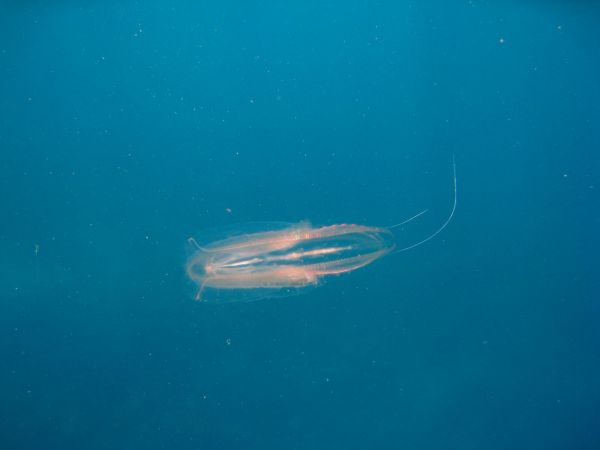


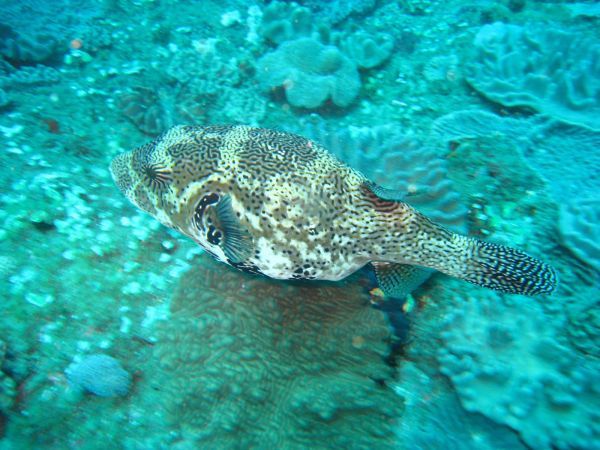




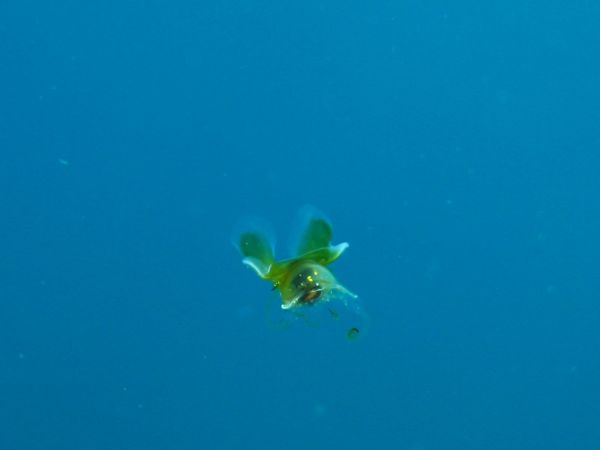
« previous entries - page 3 of 5 - next entries »





